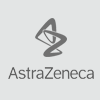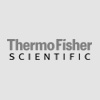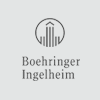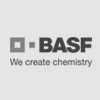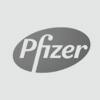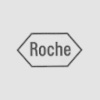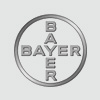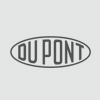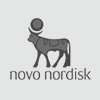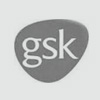Purpose
To describe the materials and methods of performing the indirect IgG Antibody ELISA.
References
"Heterogenous Enzyme Immunnoassay" in Principles and Practice of Immunoassay, 1991, Stockton Press, NY ISBN 1-56159-020-7
Materials
- Antigen extract to be coated on the plate
- Eight member human serum panel that is composed of a minimum of two seronegative samples and six seropositive samples. Two of the seropositive samples should be borderline positive to determine the sensitivity of the antigen titration.
- Monoclonal antibody to be titrated (optional).
- Medium binding microtiter plates (NUNC C96 Polysorp # 446140)
- Adhesive plate sealers (VWR Scientific # 29442-310 or equivalent)
- 1X PBST20 (from SOP-103)
- 1X PBS (from SOP-104)
- SOP-105 Diluent Buffer for HRP Conjugates
- RMS-185 anti-Human IgG (H&L)-HRP
- RMS-186 anti-Mouse IgG (H&L)-HRP
- Heat Inactivated Normal Goat Serum (NGS) (from RMS-162 and SOP-120)
- RMS-187 TMBlue HRP Substrate
- SOP-143 Formulation of HRP Stop Solution
Equipment
- Microplate Spectrophotometer capable of reading absorbancies at 450 nm and 650 nm.
- Multichannel pipettors and tips
- Plate Incubator (Boekel # 260700 or equivalent)
- Optional - Plate washer - Please note that results can be highly washer dependant. We recommend that you compare results between an assay performed with automated-washing versus an assay performed with hand-washing to validate your plate washer aspiration and dispense settings.
Procedure
Antigen Titration for Human IgG ELISA
- Make appropriate dilutions of antigen in PBS (use dilution data from Certificate of Analysis to make judgement). Make a total of 2 ml per dilution.
- Add 100 µl of diluted antigen to each well of the plate - one antigen dilution per column (rows A - H).
- Cover with a plate sealer and incubate at 37°C for 60 minutes.
- Dilute each human serum panel member 1:21 in PBST20/5% heat inactivated NGS (e.g. 75 µl serum + 1.5 ml diluent). Make a sufficient volume to cover the number of antigen dilutions that were coated.
- Remove plate sealer and wash 3 times with approximately 250 µl of PBST20 per well. Tap dry.
- Add 100 µl per well of each panel member row-wise so that each panel member has it's own row.
- Replace plate sealer and incubate at 37°C for 30 minutes.
- Make a 1:20,000 dilution of the 0.5 mg/ml anti-Human IgG(H&L)-HRP in HRP conjugate diluent (SOP-105) + 5% heat inactivated normal goat serum. Let warm to room temperature.
- Remove plate sealer and wash 5 times with approximately 250 µl of PBST20 per well. Tap dry.
- Add diluted anti-Human IgG-HRP conjugate 100 µl per well.
- Replace plate sealer and incubate at 37°C for 30 minutes.
- Remove 11 ml of TMBlue from the bottle and place in a 15 ml screw-cap centrifuge tube. Let warm to room temperature.
- Remove plate sealer and wash 5 times with approximately 250 µl of PBST20 per well. Tap dry.
- Add 100 µl per well TMBlue and incubate at room temperature for 30 minutes in the dark.
- Add 100 µl per well HRP Stop solution and read at 450 nm (650 nm subtraction)
Monoclonal Antibody Titration
- Make 12 ml of a 1:100 dilution of antigen in PBS.
- Add 100 µl of diluted antigen to each well of the plate.
- Cover with a plate sealer and incubate at 37°C for 60 minutes.
- Make 15 ml sample diluent by adding 750 µl heat inactivated NGS to 15 ml PBST20 (this is 5% NGS).
- Make 200 µl of a 1:50 dilution of each antibody to be tested in antibody diluent.
- Remove plate sealer and wash 3 times with approximately 250 µl of PBST20 per well. Tap dry.
- Add 100 µl per well of antibody diluent to the plate leaving column one wells empty. Add 200 µl of each diluted antibody to separate wells of column one.
- Serially transfer 100 µl diluted antibody down the length of the plate so that column one contains 1:50 dilutions, column two contains 1:100 dilutions, column three contains 1:200 dilutions and so on. Mix well contents three times between well transfers.
- Replace plate sealer and incubate at 37°C for 30 minutes.
- Make a 1:5,000 dilution of the 0.5 mg/ml anti-Mouse IgG(H&L)-HRP in HRP conjugate diluent (SOP-105) + 5% heat inactivated normal goat serum. Let warm to room temperature.
- Remove plate sealer and wash 5 times with approximately 250 µl of PBST20 per well. Tap dry.
- Add diluted anti-mouse IgG-HRP conjugate 100 µl per well.
- Replace plate sealer and incubate at 37°C for 30 minutes.
- Remove 11 ml of TMBlue from the bottle and place in a 15 ml screw-cap centrifuge tube. Let warm to room temperature.
- Remove plate sealer and wash 5 times with approximately 250 µl of PBST20 per well. Tap dry.
- Add 100 µl per well TMBlue and incubate at room temperature for 30 minutes in the dark.
- Add 100 µl per well HRP Stop solution and read at 450 nm (650 nm subtraction)
Data
Picking an Antigen Use Dilution:
Using a positive/negative cutoff value of twice the mean of the seronegative samples, determine the cutoff for each antigen dilution.
Determine the antigen use dilution by picking the last dilution where all seropositive samples are positive and the seronegatives give an acceptable background. Usually, seronegatives should exhibit an absorbance less than 0.100.
Determining Monoclonal Antibody Titer:
The 0.100 titer of the monoclonal antibody is the last dilution in the dilution series that the absorbance is greater than 0.100.

